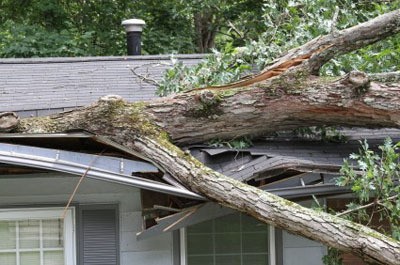
A tree that topples at the wrong time or in the wrong place can cause significant damage to your home and property. Worse yet is the possibility that it could injure or kill someone. Here are some guidelines to help you recognize whether or not a tree has become a hazard, and as well as some steps you can take to correct the situation.

The U.S. Forest Service defines a "hazard tree" as one with structural defects that are likely to cause the failure of all or part of the tree, which could result in striking a "target." A target can be a vehicle, building, or a place where people gather such as a park bench, picnic table, street, or backyard.
Certain trees are more likely to become hazardous due to any number of contributing factors:
An annual visual inspection of your trees is a good way to spot potential problems. A pair of binoculars can help you assess the hard-to-see upper branches of tall trees. A tree with defects only becomes hazardous when it has the potential to hit a target. Keep in mind though, that not all defects are structural. A tree appearing structurally sound can still be a hazard if it obstructs the view of a passing motorist, causes a sidewalk to buckle, or interferes with nearby power lines.
When performing your inspection, ask yourself the following questions:
If you answered yes to one or more of the above questions, you may want to have the tree evaluated by a certified arborist or tree professional and give you recommendations on corrective action. Before deciding what action to take, investigate your options.
When getting estimates for work, look for companies that employ certified arborists. Make sure they carry the proper state certification and licenses and that they are fully insured. You can find one near you by visiting http://www.treesaregood.com and typing in your zip code.
Trees don't live forever, but removing the hazard doesn't always mean removing the tree. Always consider the risk as well as the long-term consequences. Then try to create a landscape plan that allows for the perpetual cycle of planting, maintaining and replacing trees.
About The Author: Ellen Brown is an environmental writer and photographer and the owner of Sustainable Media, an environmental media company that specializes in helping businesses and organizations promote eco-friendly products and services.
Add your voice! Click below to comment. ThriftyFun is powered by your wisdom!